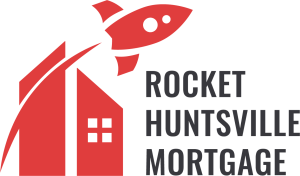
Being a first-time homebuyer can be scary. House options, realtor, taxes, loans; there’s so much to learn about and take care of.
One thing that is a major consideration is the mortgage and its type. What is the difference between the different kinds of home loans available? It can get confusing.
After going through this article, you will hopefully have one less thing to worry about as we discuss the various home loan options available in the US market.
Let’s get on with it.
Conventional Loans
A conventional loan is a mortgage not backed by the federal government. Unlike government-backed mortgages, conventional loans typically require a higher minimum credit score, usually around 620, and are generally more challenging to qualify for. Borrowers who put down less than 20% are often required to pay private mortgage insurance (PMI) with this type of loan.
Among conventional mortgages, the most prevalent type is the conforming loan, which adheres to guidelines set by Fannie Mae and Freddie Mac. These loans have set loan limits, which are adjusted annually to reflect changes in home values. For example, in 2024, the conforming loan limit for a single-family home in Huntsville is $766,550.
Key Features:
Requires detailed documentation of income, employment, credit history, assets, and debts for approval
Requires a minimum credit score of 620
Typically necessitates PMI for down payments less than 20%
Fixed-rate mortgages
A fixed-rate mortgage is a home loan where the interest rate remains constant for the entire duration of the loan term. The interest rate specified in your closing disclosure remains unchanged throughout the repayment period unless you choose to refinance your mortgage.
Common options for fixed-rate mortgages include 15 and 30-year terms. Unlike mortgages with variable rates, fixed-rate loans provide stability and predictability, allowing you to budget more effectively for housing expenses.
Key Features:
Offers a consistent interest rate that remains unchanged over the life of the loan
Typically available in repayment terms of five-year increments, although some lenders may offer customizable loan terms.
High-balance loans
A high-balance loan is a type of conventional loan that exceeds the standard conforming loan limit but remains within the threshold set by the Federal Housing Finance Agency (FHFA) for designated high-cost areas.
In essence, while the loan balance surpasses the typical conforming loan limit, it is still considered conforming because it falls within the FHFA’s specified limit for recognized high-cost regions.
For single-family homes in 2023, the high-balance loan limit was $1,089,300, equivalent to 150% of the standard loan limit.
Key Features:
Enable borrowers to secure financing above the standard loan limits in counties designated as high-cost areas
Conform to guidelines established by Fannie Mae and Freddie Mac
Adjustable-rate mortgages
An adjustable-rate mortgage (ARM) is a type of mortgage loan characterized by a variable interest rate that fluctuates throughout the repayment term. Unlike fixed-rate mortgages, the interest rate on an ARM adjusts periodically based on prevailing market conditions.
One popular ARM option is the 5/1 ARM, categorized as a hybrid mortgage due to its combination of a fixed-rate period and an adjustable-rate period. With a 5/1 ARM, the interest rate remains fixed for the initial five-year period before transitioning to annual adjustments for the remainder of the loan term.
Initially, ARMs often offer lower interest rates compared to fixed-rate loans. However, upon adjustment, the rate can rise by as much as five percentage points above the initial fixed rate.
Key Features:
Features a variable interest rate, subject to changes based on market conditions
Typically starts with an initial mortgage rate lower than fixed-rate loans
Includes a lifetime adjustment cap, limiting the maximum increase in the variable rate to typically no more than five percentage points over the loan’s lifetime.
Jumbo mortgages
A jumbo mortgage is a type of conventional loan designed for purchasing high-value properties, often luxury homes. These loans exceed the standard conforming loan limits and typically necessitate a substantial down payment of at least 20%.
Unlike high-balance conforming loans, jumbo loans do not adhere to the guidelines established by Fannie Mae and Freddie Mac. Additionally, if eligible, borrowers may qualify to borrow larger amounts with a jumbo loan, potentially exceeding $1 million or more.
In recent years, jumbo mortgage rates have generally remained comparable to conforming conventional loans, with no significant difference in average rates.
Key Features:
Enforce stricter credit score and down payment requirements compared to conforming loans
Facilitate financing for larger loan amounts crossing conforming loan limits
Require a substantial down payment, typically 20% or more
VA loans
Military recruits, veterans, and eligible spouses have access to loans backed by the U.S. Department of Veterans Affairs (VA).
In the majority of instances, VA loans do not necessitate a down payment. While the VA does not impose a minimum credit score requirement, VA lenders typically look for a minimum credit score of 620. Moreover, the VA has removed loan limits for borrowers who have never utilized their VA loan benefits or have fully paid off their existing VA loans.
Key Features:
Offer opportunities for military members, veterans, and eligible spouses to purchase a home
Typically do not require a down payment
FHA loans
Federal Housing Administration (FHA) loans are backed by the FHA and cater to borrowers with credit challenges and limited funds for down payments. With an FHA loan, you can qualify with a credit score as low as 580 and a minimum down payment of 3.5%. If your credit score falls between 500 and 579, a 10% down payment is required. In 2024, the FHA loan limit for most U.S. counties is $498,257 for single-family homes.
FHA loans mandate mortgage insurance premiums, which differ based on down payment amounts. Borrowers who put down less than 10% are required to pay FHA mortgage insurance for the duration of the loan unless they refinance into a conventional loan after achieving at least 20% equity. If the down payment is at least 10%, mortgage insurance is only payable for 11 years.
Key Features:
The minimum credit score requirement of just 580 for the minimum down payment
Requirement for mortgage insurance premiums for most borrowers
Opportunity to purchase a multi-unit property with up to four units as a primary residence with just a 3.5% down payment (assuming a minimum credit score of 580)
Reverse mortgages
Reverse mortgages are available to homeowners aged 62 and older, offering a distinct alternative to traditional “forward” home loans. Unlike conventional mortgages where you make payments to the lender, with a reverse mortgage, the lender makes payments to you from your available equity, either in a lump sum or monthly installments.
The most prevalent type of reverse mortgage is the Home Equity Conversion Mortgage (HECM), which is insured by the FHA and entails various upfront and ongoing costs. Similar to FHA loans, HECMs are subject to loan limits, with the maximum limit set at $1,089,300 for 2023. Repayment options for a reverse mortgage include selling the home or refinancing to obtain a new forward mortgage to settle the debt.
Key Features:
Requires a minimum of 50% equity in the home for borrowers
Deferred repayment until the home is sold, the borrower moves out or passes away (along with eligible surviving non-borrowing spouses)
Require borrowers (or surviving spouses) to maintain the home, reside in it as a primary residence, and cover property taxes and homeowners insurance costs
USDA loans
USDA loans, insured by the U.S. Department of Agriculture (USDA), are tailored for low- and moderate-income buyers seeking to purchase homes in designated rural areas. These home loans do not necessitate a down payment or mortgage insurance, but there are income restrictions applicable to borrowers.
Key Features:
Designed for borrowers interested in purchasing homes in USDA-designated rural areas
Waives the requirement for a down payment or mortgage insurance
Conclusion
We hope you now have some good home loan options to mull over and decide which one is best for you.
The mortgage servicing process can get tricky. If you need consultation on which loan to get and how to get it, then Rocket Mortgage is here for you. Connect with us to sort your mortgage issues out.
